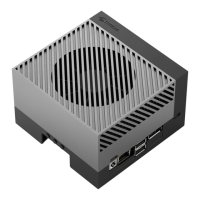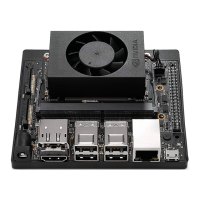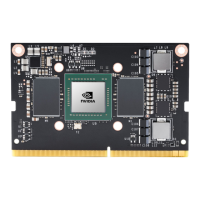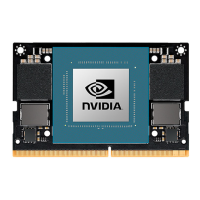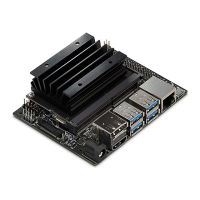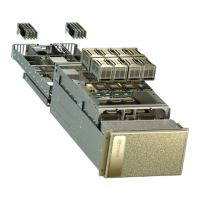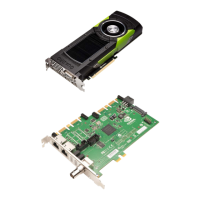General Layout Guidelines
Jetson AGX Xavier Series Product DG-09840-001_v2.5 | 129
19.2 Connecting Vias
To be effective, vias must be connected properly to the signal and power planes. Poor via
connections make the capacitor and power planes less effective, leading to increased cost due
to the need for additional capacitors to achieve equivalent performance. This not only impacts
the Bill of Materials (BOM) cost of the design, but it can greatly impact quality and reliability of
the design.
19.3 Trace Guidelines
Trace length and impedance play a critical role in signal integrity between the driver and the
receiver on Jetson AGX Xavier. Signal trace requirements are determined by the driver
characteristics, source characteristics, and signal frequency of the propagating signal.
19.3.1 Layer Stack-Up
The number of layers required is determined by the number of memory signal layers needed
to achieve the desired performance, and the number of power rails required to achieve the
optimum power delivery/noise floor. For example, high-performance boards require four
memory signal routing layers, with at least two GND planes for reference. This comes to six
layers; add another two for power, which gives eight layers minimum. Reduction from eight to
six layers starts the trade-off of cost versus performance.
Power and GND planes usually serve two purposes in PCB design: power distribution and
providing a signal reference for high-speed signals.
Either the power or the ground planes can be used for high-speed signal reference; this is
particularly common for low-cost designs with a low layer count. When both power and GND
are used for signal reference, make sure you minimize the reference plane transition for all
high-speed signals. Decoupling caps or transition vias should be added close to the reference
plane transitions.
19.3.2 Trace Length
The maximum trace length for a given signal is determined by the maximum allowable
propagation delay and impedance for the signal. Higher frequency signals must be treated as
transmission lines (see Chapter 21 “Transmission Line Primer”) to determine proper trace
characteristics for a signal.
All signals on the graphics card maintain different trace guidelines. Refer to the
corresponding signal chapter in the design guide to determine the guidelines for the signal.
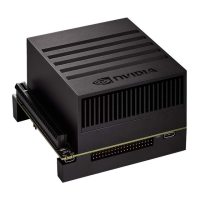
